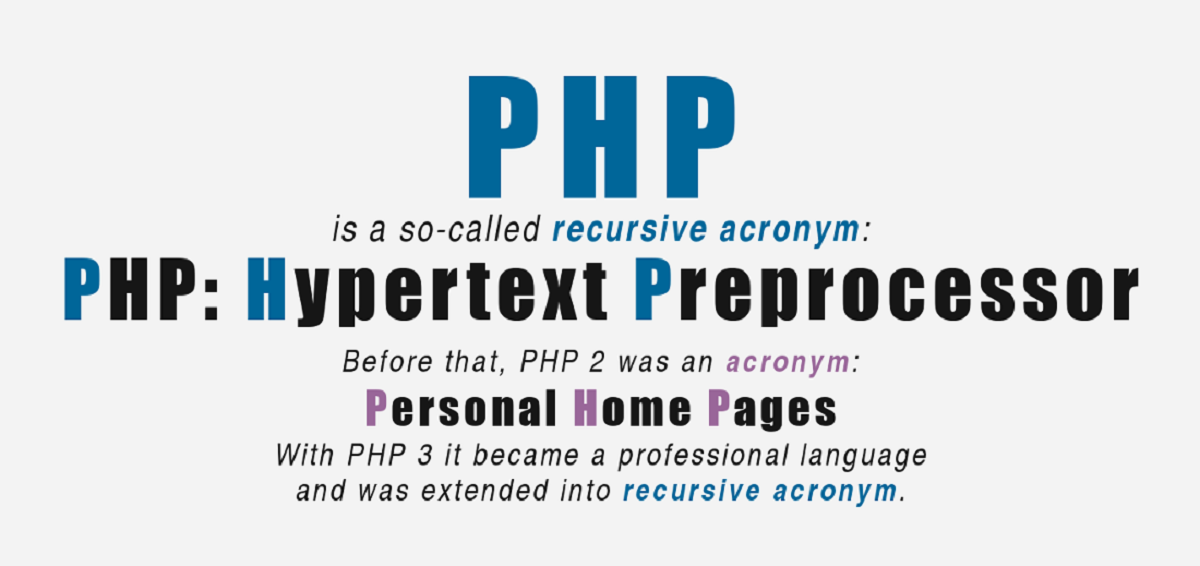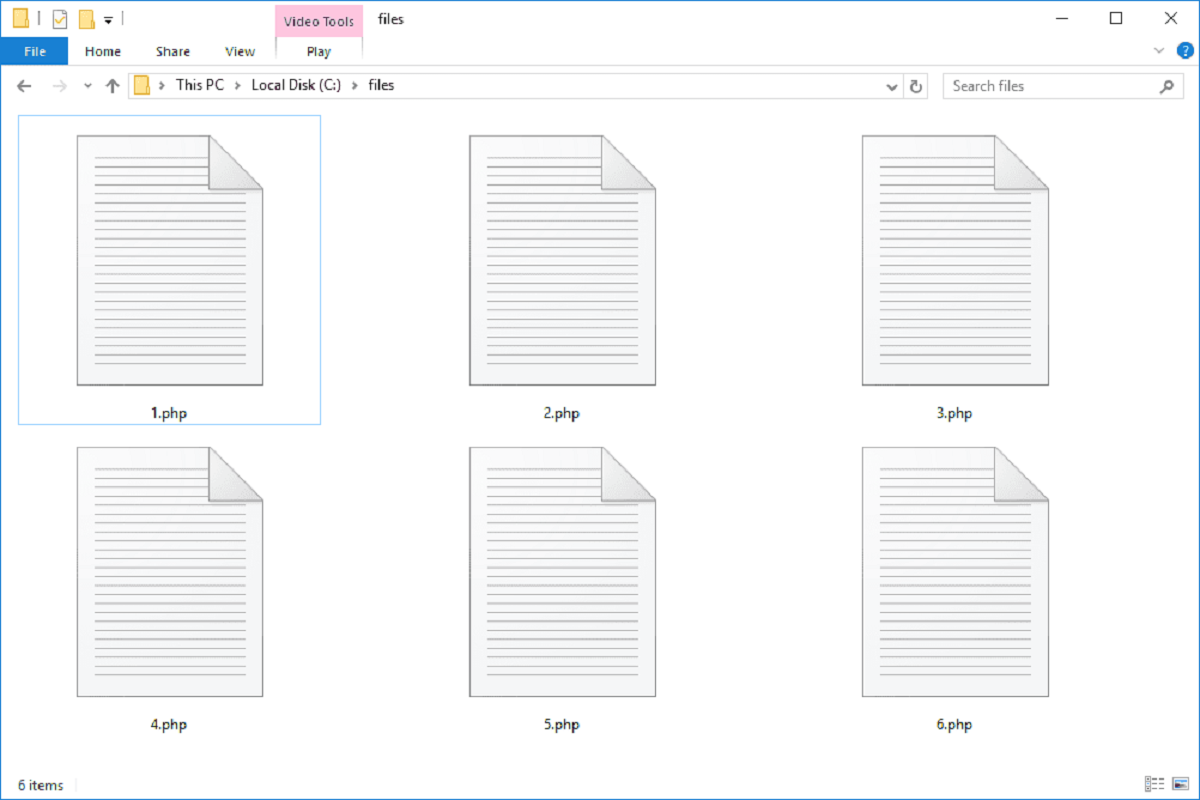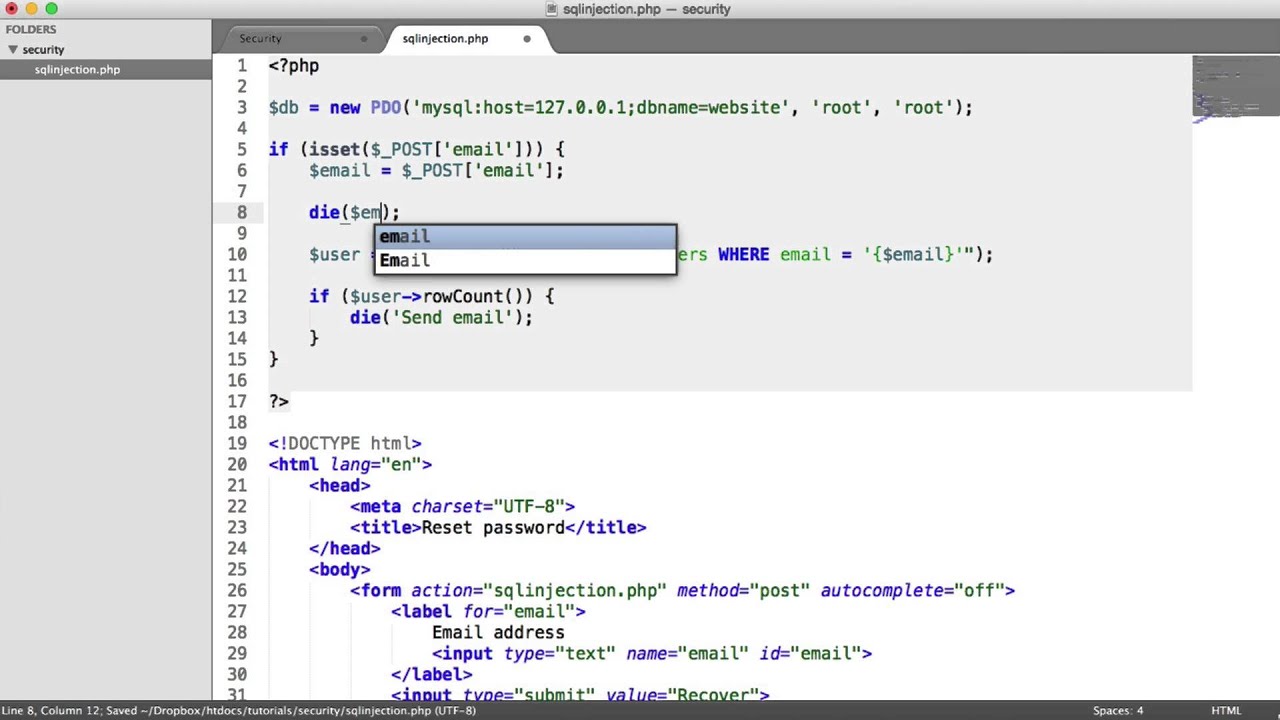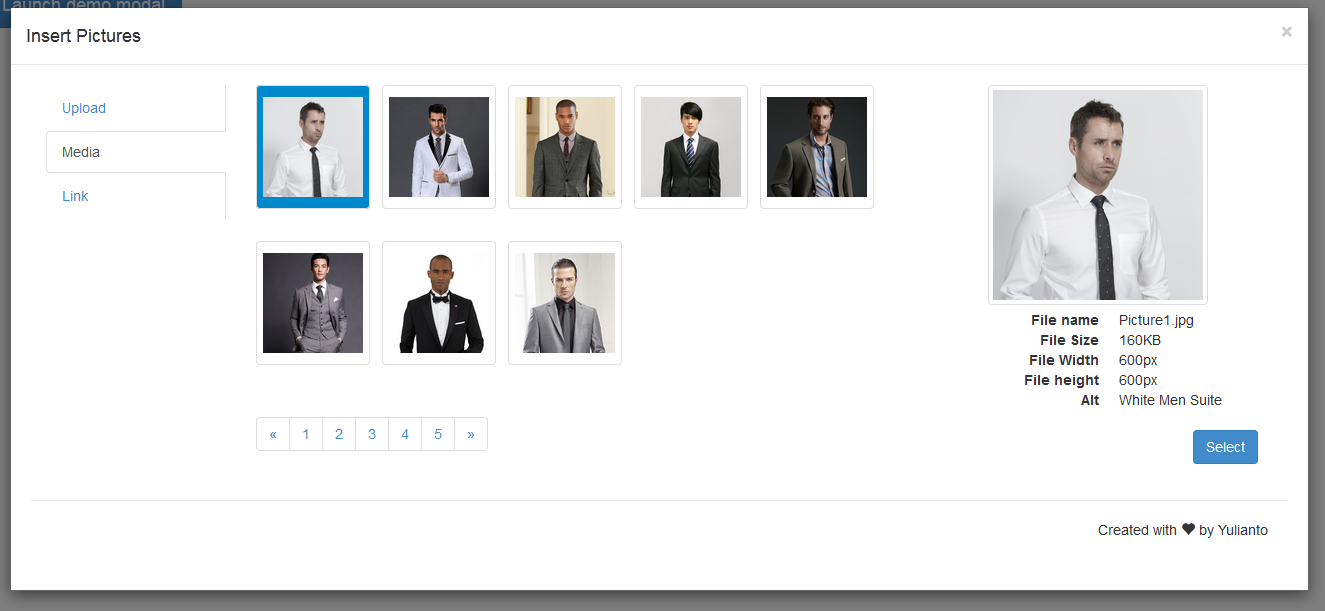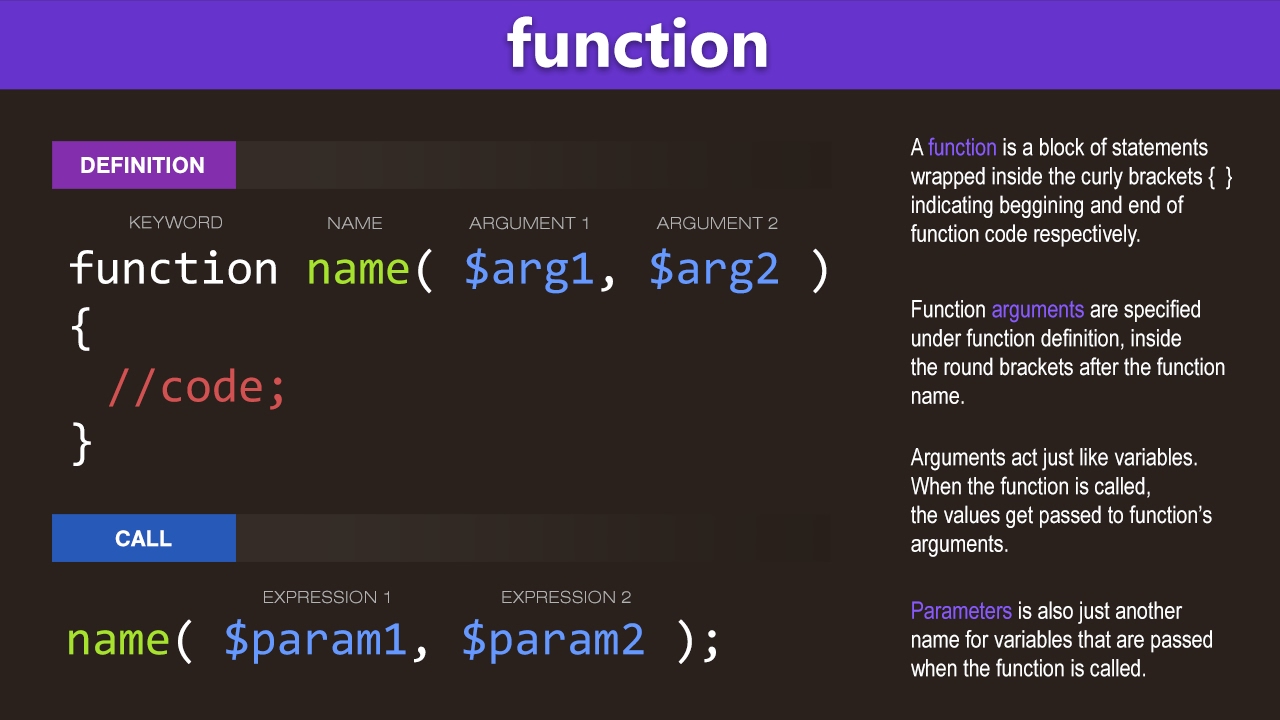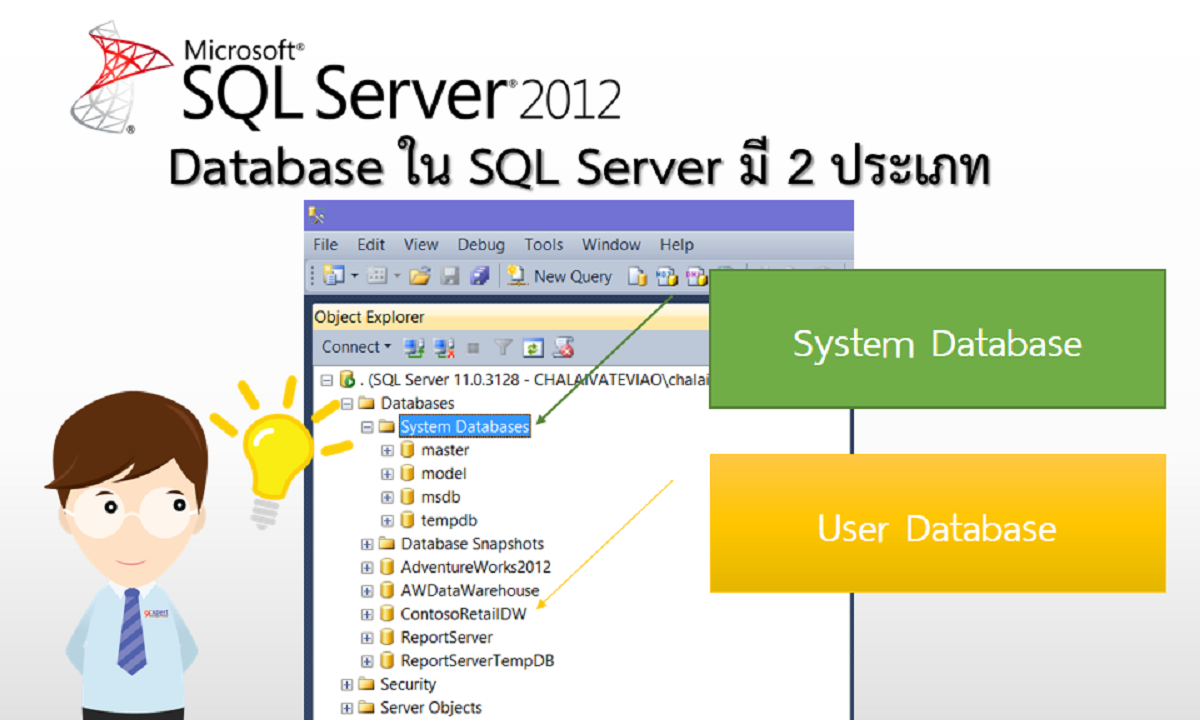Introduction
Welcome to the world of PHP! In this article, we will explore the fascinating world of PHP – a powerful scripting language that has revolutionized web development. Whether you are a seasoned programmer or a novice web enthusiast, understanding PHP is essential in leveraging the full potential of web technologies.
PHP stands for “Hypertext Preprocessor,” and it is a widely-used open-source scripting language embedded within HTML. It provides developers with the ability to create dynamic and interactive web pages by executing code on the server-side. What sets PHP apart from other programming languages is its simplicity, flexibility, and extensive community support.
Throughout this article, we will delve into the history of PHP, uncover the true meaning behind its acronym, and compare it to other programming languages. By the end, you will have a clear understanding of what PHP is and why it has become a staple in web development.
So, whether you are a curious beginner or a seasoned developer looking to expand your skill set, let’s embark on this exciting journey to demystify PHP and discover the incredible possibilities it offers!
What is PHP?
PHP is a server-side scripting language that was originally designed for web development. It is primarily used to create dynamic web pages and applications. With PHP, developers can embed code directly into HTML, allowing for the seamless integration of dynamic content, database interactions, and other functionalities.
What makes PHP stand out is its ability to generate HTML dynamically, based on variables, conditions, and user input. This enables developers to create personalized and interactive web experiences. PHP is also capable of handling form data, managing cookies and sessions, and connecting to databases, making it a versatile language for web development.
One of the key advantages of PHP is its ease of use. Many beginners find PHP relatively easy to learn and use due to its simple and straightforward syntax. The language provides a wide range of built-in functions that simplify common tasks, such as manipulating strings, working with arrays, and performing mathematical calculations.
Furthermore, PHP has extensive documentation and a supportive online community, making it easier for developers to find resources and get help when needed. The vast library of open-source frameworks and libraries available for PHP further enhances its capabilities and allows developers to build robust and scalable web applications.
It’s important to note that PHP is a server-side language, meaning that the code is executed on the web server before the web page is sent to the user’s browser. This offers several advantages in terms of security and performance. It also means that PHP can be seamlessly integrated with other technologies, such as databases and APIs, to create dynamic and data-driven web applications.
In summary, PHP is a powerful server-side scripting language that simplifies web development by allowing developers to embed code within HTML. Its simplicity, versatility, and extensive community support make it a popular choice for creating dynamic and interactive web pages and applications.
History of PHP
The history of PHP dates back to 1994 when Rasmus Lerdorf created a collection of Perl scripts to track visits to his online resume. As the project grew, he decided to rewrite it in C and named it “Personal Home Page Tools.” This laid the foundation for what would eventually become PHP.
In 1995, Rasmus released the first version of PHP as an open-source project. Originally, PHP stood for “Personal Home Page,” reflecting its initial purpose of creating dynamic web pages. Over time, PHP evolved into a more robust and versatile scripting language.
In 1997, two developers, Zeev Suraski and Andi Gutmans, rewrote the PHP parser engine from scratch. This new engine, known as the Zend Engine, greatly improved the performance and stability of PHP. The release of PHP 3.0 in 1998 marked a significant milestone, as it introduced support for object-oriented programming and opened up new possibilities for web development.
With the release of PHP 4 in 2000, PHP gained even more momentum. It became a dominant force in web development, thanks to its simplicity and ease of use. During this time, PHP became widely adopted by developers around the world, leading to the massive growth of websites powered by PHP.
The next major release, PHP 5, came in 2004, bringing significant improvements to the language. It introduced better support for object-oriented programming, along with added features like exception handling and improved MySQL functionality. PHP 5 solidified PHP’s position as a powerful and mature scripting language.
In recent years, PHP has continued to evolve with the release of PHP 7 in 2015. This update introduced substantial performance enhancements, making PHP even faster and more efficient. PHP 7 also brought features such as scalar type declarations and anonymous classes, further improving the language’s capabilities.
Today, PHP remains one of the most popular programming languages for web development, powering millions of websites and applications across the globe. Its continuous development and strong community support ensure that PHP will remain a reliable and innovative choice for web developers for years to come.
The Acronym
PHP is an interesting acronym that has given rise to different interpretations over the years. Originally, PHP stood for “Personal Home Page,” reflecting its initial purpose of creating dynamic web pages for personal websites. However, as PHP grew in popularity and functionality, the meaning behind the acronym evolved.
Today, PHP is commonly known to stand for “Hypertext Preprocessor,” which is a recursive acronym. This name emphasizes the language’s ability to preprocess hypertext or HTML documents, allowing for dynamic content generation and manipulation. With PHP, developers can embed code directly into HTML files, making it easy to combine static content with dynamically generated data.
The decision to rename PHP to “Hypertext Preprocessor” was made to reflect the language’s expanding capabilities beyond its original purpose. It also aligned with the industry trend of using acronyms that describe the functionalities of programming languages.
It’s worth noting that the recursive acronym “Hypertext Preprocessor” is sometimes met with playful skepticism from the programming community, as it appears redundant by nature. Nevertheless, the name has become widely accepted and is now used to refer to the language worldwide.
While the official meaning of PHP may be “Hypertext Preprocessor,” some developers have come up with creative alternative interpretations for fun. For instance, PHP has been humorously referred to as “Please Hack the Planet” or “PHP: Home of Penguins.” These unofficial interpretations showcase the playful and creative nature of the programming community.
In the end, it is important to remember that regardless of the exact meaning behind the PHP acronym, its significance lies in the powerful and versatile scripting language it represents. PHP has evolved from its humble beginnings as a personal home page tool to become a widely-used language for web development, empowering developers to create dynamic and interactive web experiences.
Interpretation of PHP
PHP, as a widely-used scripting language, can be interpreted and understood in different ways depending on the perspective of developers and users. Let’s explore some common interpretations of PHP:
1. Power, Harmony, and Productivity: Many developers interpret PHP as a powerful language that combines well with HTML, offering a harmonious coding experience. The simplicity and flexibility of the language enable developers to be productive and efficiently build dynamic web applications.
2. Practical Hypertext Processor: Another interpretation of PHP is as a practical hypertext processor. With its ability to seamlessly embed code within HTML, PHP enables the processing of data and the generation of dynamic content, directly impacting the presentation layer of websites.
3. Platform for Hosting Pages: PHP can also be seen as a platform for hosting web pages. It provides the necessary tools and functionalities to handle various web-related tasks, like interacting with databases, managing user sessions, and handling file uploads.
4. Purposeful and High-Performance: PHP can be viewed as a purposeful and high-performance scripting language. It allows developers to execute server-side code efficiently, resulting in fast-loading and interactive websites.
5. Professional Home of Programmers: For many programmers, PHP represents a professional and welcoming community. The open-source nature of PHP fosters collaboration and knowledge-sharing, making it an attractive environment for developers to learn and grow.
6. Progressive and Human-centric Programming: PHP’s continuous evolution and its focus on human-centric programming contribute to its interpretation as a progressive language. Developers can leverage PHP’s features and frameworks to create user-friendly and intuitive web applications.
These interpretations highlight the diverse perspectives and experiences of developers and users in relation to PHP. While each interpretation may have its own nuances, they collectively demonstrate the value and impact that PHP has had on web development.
Ultimately, PHP serves as a powerful and versatile tool for creating dynamic and interactive web pages. Its interpretation may vary, but its functionality and widespread adoption remain consistent, empowering developers to build robust and engaging web applications.
PHP vs. Other Programming Languages
PHP is just one of the many programming languages available to developers. Each language has its own strengths and characteristics that make it suitable for specific use cases. Let’s compare PHP to some popular programming languages and explore their key differences:
1. PHP vs. JavaScript: While PHP is primarily used for server-side scripting, JavaScript is a client-side scripting language. PHP executes on the server before the web page is sent to the browser, whereas JavaScript runs directly in the browser. JavaScript is commonly used for front-end development, adding interactivity and dynamic features to web pages.
2. PHP vs. Python: PHP and Python are both versatile scripting languages, but they have different use cases. PHP excels in web development, with seamless integration into HTML. It has extensive support for databases and web-related tasks. Python, on the other hand, is often used for general-purpose programming, data analysis, scripting, and machine learning.
3. PHP vs. Ruby: PHP and Ruby are both dynamic scripting languages, but they have different philosophies and ecosystems. PHP focuses more on web development and has a wide array of frameworks and libraries available. Ruby, particularly with the Ruby on Rails framework, emphasizes developer productivity and convention over configuration.
4. PHP vs. Java: PHP and Java differ in terms of their architecture and use cases. PHP is primarily used for web development, whereas Java is a general-purpose programming language. Java is often used for building large-scale enterprise applications and has a strong emphasis on object-oriented programming.
5. PHP vs. C#: PHP and C# are both widely used languages, but they have different origins and ecosystems. PHP is rooted in web development and has strong community support. C# is a language developed by Microsoft and is used for building Windows applications, web services, and mobile applications.
While each programming language has its own strengths and areas of focus, PHP remains a popular choice for web development. Its seamless integration with HTML, extensive community support, and vast library of frameworks and libraries make it a versatile tool for building dynamic and interactive web applications.
It’s important to select the right programming language based on the specific requirements of your project, taking into consideration factors such as performance, scalability, ecosystem, and community support. The choice between PHP and other languages ultimately depends on the unique needs and goals of your development project.
Conclusion
In conclusion,
PHP continues to be a fundamental and widely-used scripting language for web development. It has evolved from its humble beginnings as a personal home page tool to a versatile language that powers countless websites and applications. With its ability to seamlessly integrate with HTML and its extensive community support, PHP offers developers a powerful toolset to create dynamic and interactive web experiences.
The history of PHP showcases its growth from a simple collection of scripts to a robust and mature language. The PHP acronym has undergone a transformation, reflecting its expanded capabilities as a “Hypertext Preprocessor.” While fun and alternative interpretations of PHP exist, its true value lies in its simplicity, flexibility, and ability to process hypertext.
When compared to other programming languages, PHP shines in its seamless integration with HTML, making it an excellent choice for web development. While JavaScript, Python, Ruby, Java, and C# each have their unique strengths and applications, PHP’s focus on web development, rich library of frameworks, and large community make it a popular choice for developers.
As we journey through the vast world of web development, understanding PHP and its capabilities is essential. It offers developers the means to create dynamic and interactive web pages, handle form data, and connect to databases. With its simplicity, versatility, and extensive documentation, PHP remains an accessible language for beginners and a valuable asset to seasoned developers.
Whether you’re looking to build a personal website or a large-scale web application, PHP provides the necessary tools and resources to bring your ideas to life. Its enduring popularity and continuous development ensure that PHP will continue to play a significant role in the web development landscape.
So, embrace the world of PHP and unlock the potential to create engaging, dynamic, and user-friendly web experiences!







